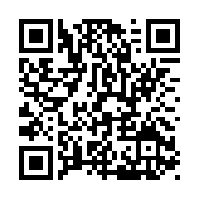28 Study Questions, Activities, and Resources
Study Questions and Activities
Stave 1
- If the purpose of the ghost of Hamlet’s father is to incite revenge, what is the purpose of Marley’s ghost?
- What is the thematic significance of the narrator’s early insistence on certainty and proof?
- How is his nephew Fred a foil to Scrooge?
- How does Scrooge justify his refusal to donate money to the two canvassers?
- Give some examples of humour in Stave 1.
- Why is Bob Cratchit expected to show up for work on December 26? In what year did it become a statutory holiday in Britain?
- Give some examples to demonstrate Scrooge’s avarice.
- What does Scrooge mean when he remarks to Marley’s ghost, “You’re particular for a shade”?
- How do the ghost and Scrooge hold opposing views on the purpose of life?
- At what different times does Marley tell Scrooge the three ghosts will arrive?
Stave 2
- Give an example or two of the ghost’s playing devil’s advocate and Scrooge correcting him.
- Why does Scrooge resent Fred?
- Why does Scrooge’s fiancée release him from the engagement?
- What do the child-man images, especially with the Ghost of Christmas Past, symbolize? See especially, “I should have liked…to have had the lightest licence of a child, and yet been man enough to know its value.” [cf. Wordsworth, “The child is father of the man…Matthew 18:3.]
- Who is Belle? You might use the word search function if you are using an e-text.
Stave 3
- What is the autobiographical connection to the Cratchit family’s living in Camden Town? (See the brief biography that precedes the text of A Christmas Carol.)
- Describe the Ghost of Christmas Present. How does he differ from the first spirit?
- How does Scrooge reproach this spirit before they visit the Cratchit home?
- Under what condition will the prophecy of Tiny Tim’s death come to pass?
- What is ironic about the ghost’s words to Scrooge regarding the surplus population?
- What is the effect of the short descriptions of the miners and the sailors?
- How does the scene at Fred’s party echo the scene at the Cratchit family dinner?
- Whose offspring are the boy Ignorance and the girl Want?
Stave 4
- How does the Ghost of Christmas Yet to Come differ in appearance from the two other ghosts?
- What do the charwoman, the laundress, and the undertaker’s man have in common with Scrooge?
- Why is the charwoman Mrs. Dilber’s role expanded in the 1951 film?
- What is the ironic purpose of the scene with Caroline and her husband?
- What is the green place to which Bob refers?
- What lines in this scene strike you as overly sentimental? (cf. Oscar Wilde’s apocryphal aphorism, “’One would have to have a heart of stone to read the death of little Nell without dissolving into tears…of laughter.” Little Nell is the impossibly good child in Dickens’s novel The Old Curiosity Shop (1841).
Stave 5
- Does the subtitle of Stave 5 have a double meaning?
- How is the apparent contradiction in the last question of Stanza 1 resolved after Scrooge learns what day it is?
- Does the reborn Scrooge hesitate to spend on himself as well as on others?
- What does Scrooge say to the canvasser that he rebuffed in his counting house?
- What does Scrooge fear when he asks to be admitted to Fred’s party?
- What is the first kindness that Scrooge shows to Bob Cratchit on Boxing Day?
Essay Topics and Activities
View both the 1935 and 1984 film adaptations of A Christmas Carol linked below. Then write a short paper (750 to 1,000 words) contrasting the same scene in each version. Which version does a better job in terms of atmosphere, characterization, or theme? If you prefer to gain access to the 1951 version, then substitute it for either the 1935 or 1984 versions.
http://charlesdickenspage.com/dickens_on_film.html#carol
Write a research essay of 1,500 to 2,500 words showing how Dickens criticizes contemporary attitudes to the poor. Be sure to consider the ideas of Thomas Malthus and those of the Sabbatarians. For Malthus, begin with the footnotes 8 and 9 in Stave 1 of your edition. For Sabbatarianism, see George Landow’s article:
http://www.victorianweb.org/religion/sabbatarianism.html
Then read the following excerpt from Dickens’s account of his visit to a London workhouse on May 5, 1850. His article, “A Walk in a Workhouse,” appeared in his Household Words magazine on May 25.
http://www.victorianweb.org/authors/dickens/poorlaw.html
Compare and contrast the early story of Gabriel Grub in Chapter 29 of The Posthumous Papers of the Pickwick Club (“The Story of the Goblins Who Stole a Sexton”) with A Christmas Carol. Limit your topic to theme, characterization, or another element of fiction.
http://www.gutenberg.org/files/580/580-h/580-h.htm#link2HCH0029
There is also an audio adaptation of “The Story of the Goblins Who Stole a Sexton”.
Resources
Dickens in Context: http://www.bl.uk/learning/langlit/dickens/dickenshome.html
http://www.bl.uk/romantics-and-victorians/videos/dickens-a-christmas-carol
References
Figure 1:
Dickens by Watkins detail by George Herbert Watkins (http://commons.wikimedia.org/wiki/File:Charles_Dickens_3.jpg#mediaviewer/File:Dickens_by_Watkins_detail.jpg) is in the Public Domain


